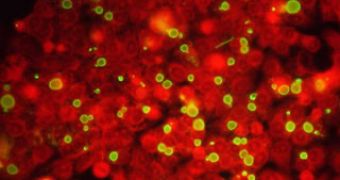Gonorrhea or clap, as it is colloquially named, is the second most common sexually transmitted disease in the US after Chlamydia.
The disease is determined by the bacteria Neisseria gonorrhoeae and causes pains during urinating and sexual contact, ectopial pregnancies, and blindness in newborn if untreated.
There were 339,593 cases reported in the US in 2005 and the real numbers could be double. After a decline from 1975 to 1997, recently the disease has seen a boom. This seems to be due to the emergence of drug resistance.
The Centers for Disease Control and Prevention (CDC) has warned that antibiotics like fluoroquinolones (ciprofloxacin, ofloxacin, and levofloxacin) are no longer effective in the US. A new report shows that fluoroquinolone-resistant gonorrhea is now common in the US among heterosexuals and homosexual men, above the 5 % threshold.
The data collected from 26 U.S. cities found that 6.7 % of the heterosexual men presented the fluoroquinolone-resistant Neisseria gonorrhoeae in 2006, an 11-fold rise from 0.6 % in 2001.
Now the only class of antibiotics recommended against gonorrhea are the cephalosporins. "There is an urgent need for new, effective medicines to treat gonorrhea. We are running out of options to treat this serious disease," said Dr. Kevin Fenton, Director of CDC's National Center for HIV/AIDS, Viral Hepatitis, STD, and TB Prevention. By now, significant resistance to cephalosporins has not been detected. Oral fluoroquinolones were used as main treatments for gonorrhea since 1993.
But in 2002, CDC informed that fluoroquinolones were of no use against gonorrhea infections acquired in California and Hawaii.
The new research found a rise in the past five years in the overall proportion of fluoroquinolone-resistant gonorrhea cases from less than 1 % in 2001 to 13.3 % in the first half of 2006.
The cases were detected all across the US in the first half of 2006 (in 25 of the 26 cities in the analysis), and the highest rises took place from 2004 to 2006 in Philadelphia (from 1.2 % to 26.6 % of gonorrhea cases) and Miami (from 2.1 % to 15.3 %).
Now CDC recommends ceftriaxone (a type of cehalosporin) available as an injection for all types of gonorrhea infection (genital, anal, and throat). "New treatment recommendations are critical if we are to continue to see progress in controlling gonorrhea," said Dr. John Douglas, director of the Division of STD Prevention. "We cannot afford to lose ground against a disease that continues to affect roughly 700,000 Americans each year."

 14 DAY TRIAL //
14 DAY TRIAL //